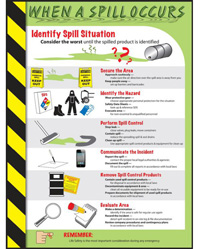| The Home page of ILPI's Safety Data Sheet (SDS) Resource, the leader in SDS information since 1995! | |
| The history and philosophy behind this resource. | |
| A curated collection of books and reference materials concerning Safety Data Sheets and closely related topics. | |
| Paste your plain text SDS into the SDS-Demystifier, and it will be converted into a hypertext-enriched document with links to detailed explanations of each key term. | |
| An extensive list of frequently asked questions about Safety Data Sheets including regulations, content, compliance, and more. | |
| A humorous take on Safety Data Sheet jargon. Fill in the blanks on our entry form to generate a personalized Unsafety Data Sheet to share with your coworkers. | |
| Since 1995, we've maintained this massive curated list of the best places to find Safety Data Sheets on the Internet. | |
| Way more than a glossary, this hypertext-enhanced resource covers hundreds of SDS-related terms and expert knowledge. Each entry includes both the SDS relevance and links to additional authoritative resources. | |
| Archived results of Safety Data Sheet related polls taken by some of our millions of site visitors | |
| You are here! The OSHA regulations behind SDS regulations, including the inspection guidelines and over 400 official interpretations letters under the Hazard Communication Standard | |
| Commercial suppliers of SDS authoring and management software as well as cloud compliance services. | |
| Commercial companies that will create SDS's for your specific needs as well as SDS translation companies. |

Safety signs, banners, and scoreboards? Get yours at Safety Emporium!
| Title: 11/17/1988 - Applicability of the Hazard Communication Standard to stevedores in the containerized shipping industry. | |
| Record Type: Interpretation | Standard Number: 1910.1200 |
November 17, 1988
Alan J. Kaplan, Director
Safety Engineer
Sea-Land Corporation [now part of Maersk Line]
Post Office Box 800
Iselin, New Jersey 08830
Dear Mr. Kaplan:
This is in response to your letter of June 15, concerning the training requirements of the Occupational Safety and Health Administration's (OSHA) Hazard Communication Standard (HCS) as applied to stevedores. Your letter requests reconsideration of our previous correspondence to you of June 6, 1988.

Train your employees to respond to emergencies with colorful workplace safety posters from Safety Emporium.
The standard itself addresses the issue of sealed containers in section 29 CFR 1918.90(b)(4)(iii): "Employers shall ensure that employees are provided with information and training...to the extent necessary to protect them in the event of a spill or leak of a hazardous chemical from a sealed container.." [ILPI says: right section, wrong standard. We assume they mean 1910.1200(b)(4)(iii)] Although, as you state, stevedores may not directly handle individual sealed containers, the trailers, with their sealed cargo, would also be considered sealed containers and therefore covered by the limited provisions of the standard under paragraph (b)(4).
Since the standard addresses the handling of hazardous chemicals in sealed containers, OSHA cannot exempt stevedores in the containerized shipping industry from the training requirements of the HCS. Employers can develop training programs to reflect the type of work performed. For example, if an employer's work practice procedures for leaks and spills is to evacuate the work area, then the employer's training program could just address the proper action to take, such as evacuation procedures, cleanup responsibility, etc.
Specific training is not required concerning the hazards of each chemical stevedores may encounter in a sealed container, provided that employees are aware of general precautions to take in the event of a spill or leak of the chemical. If an employer has employees who open sealed containers, then those employees would be covered by the more comprehensive provisions of the standard.
If we can be of further assistance, please feel free to contact us again.
Sincerely, Thomas J. Shepich, Director
Directorate of Compliance Programs
The original official public domain version of this document is available from OSHA at https://www.osha.gov/laws-regs/standardinterpretations/1988-11-17.